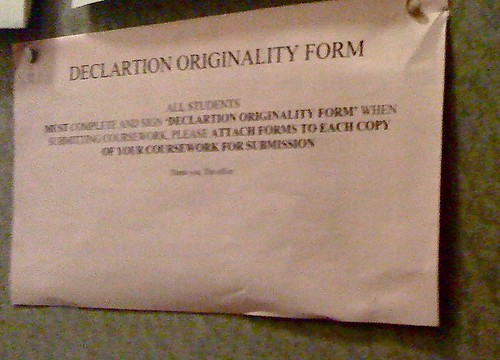Oasis Of Relief
I’ve been running hard to keep from falling too far behind this week, and events such as yesterday’s committee-meeting-a-thon (although all most of the meetings were quite congenial) set my wheels skidding instead of pushing forward. Today I ran into another setback when — wait, let me start over.
Yesterday, in between committee meetings, there was a gap in which I could text my laptop on the projections system in the room in which I’d be giving a presentation today. Time and experience have taught me that it’s always, always, always worth running such a check, and this time reaffirmed that axiom. As it turned out, I had the wrong adapter for our projector in the Upper Seminar Room. I quickly dashed off a note to the IT Department asking whether the University had such an adapter, giving both the specs of the adapter itself and the units between which I needed it to adapt. IT then passed along some queries, someone knew someone who had the adapter, who said it would be brought by the office yesterday afternoon. It turned up at the office this morning, and as soon as I saw it I recognized that it was a different adapter; the relaying of the request had gotten it to someone who didn’t recognise the relevant technical specs and who went to some trouble to locate a connector that they thought would be equivalent. With only a little while to go before the presentation (and a class and another committee meeting in between), I sprinted walked vigorously to the underground, caught a train to Buchanan Street, bought the adapter out-of-pocket at the Apple Store (hey, at least this way I’ll have it on hand when I need it), caught the train back to Hillhead and made it to my office a minute before the committee meeting.
So that was the frustration du jour, and although it was an expense and a bother it worked out fine, which makes it worth having done. The committee meeting was short (and at the end of it, my confusion about what we were about to do was dispelled), class went all right, and I plopped down to set up the presentation spot on four o’clock. The Theology, Literature, & the Arts seminar is larger than the Theology seminar, apparently; the room was very full, and I launched into the talk — a revised and updated version of one I’d given at the SBL a few years back — and the seminar seemed quite engaged by it. It’s hard for me to know how much to expect that other people have already digested from the soup of ideas that I’ve been living with, thinking with for more than fifteen years; I usually oscillate between wondering if I’m expounding my topic at too basic a level, and sensing that I’m going right over people’s heads. This time the presentation and the seminar seemed to mesh pretty well, and by the time I showed the N.W.A. video for “Straight Outta Compton” (that wasn’t part of the original SBL presentation) juxtaposed with Nina Gordon’s acoustic cover version, I think everyone was more or less on board.
Excellent questions and answers followed, then the traditional pint of beer out with the seminar, and I stumbled home weary and hungry, but intensely thankful for the opportunity to unreel my ideas to an alert, interested, acute gathering of post-grads and colleagues.






